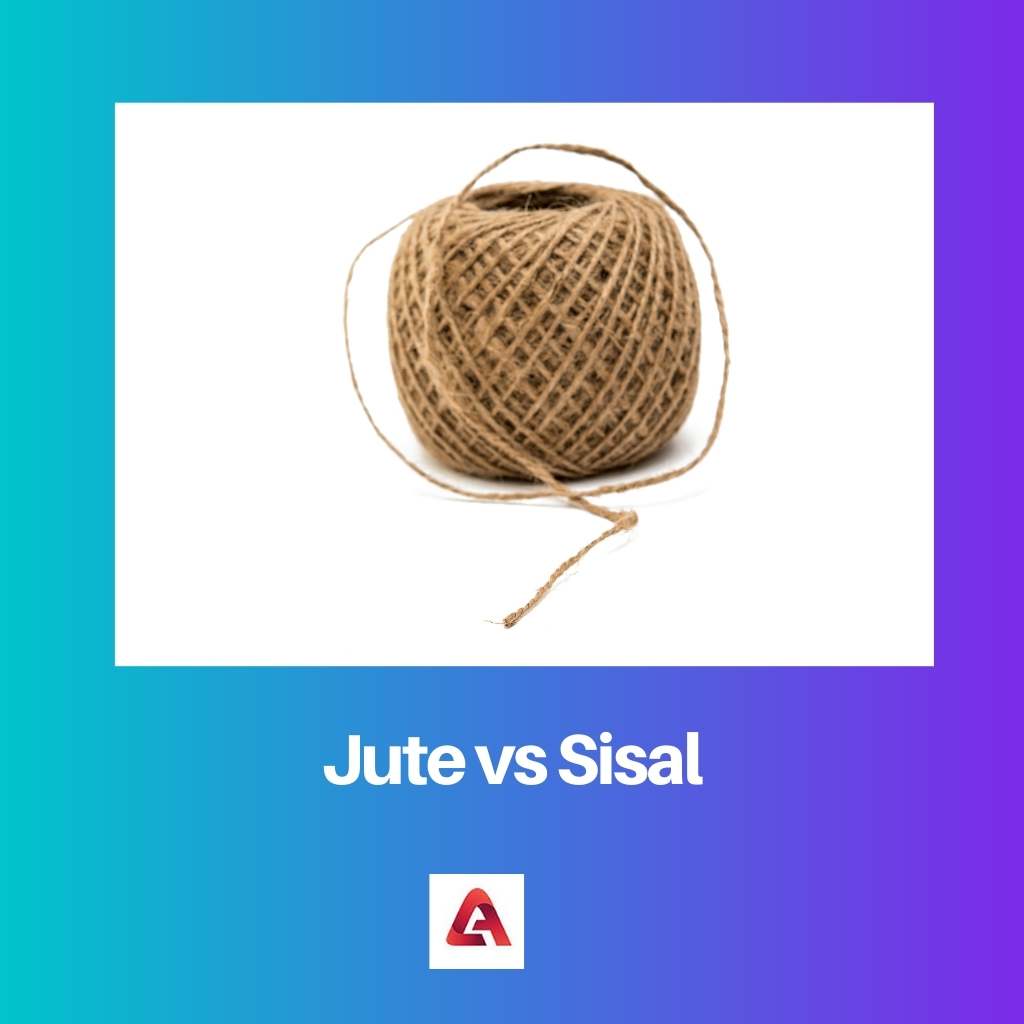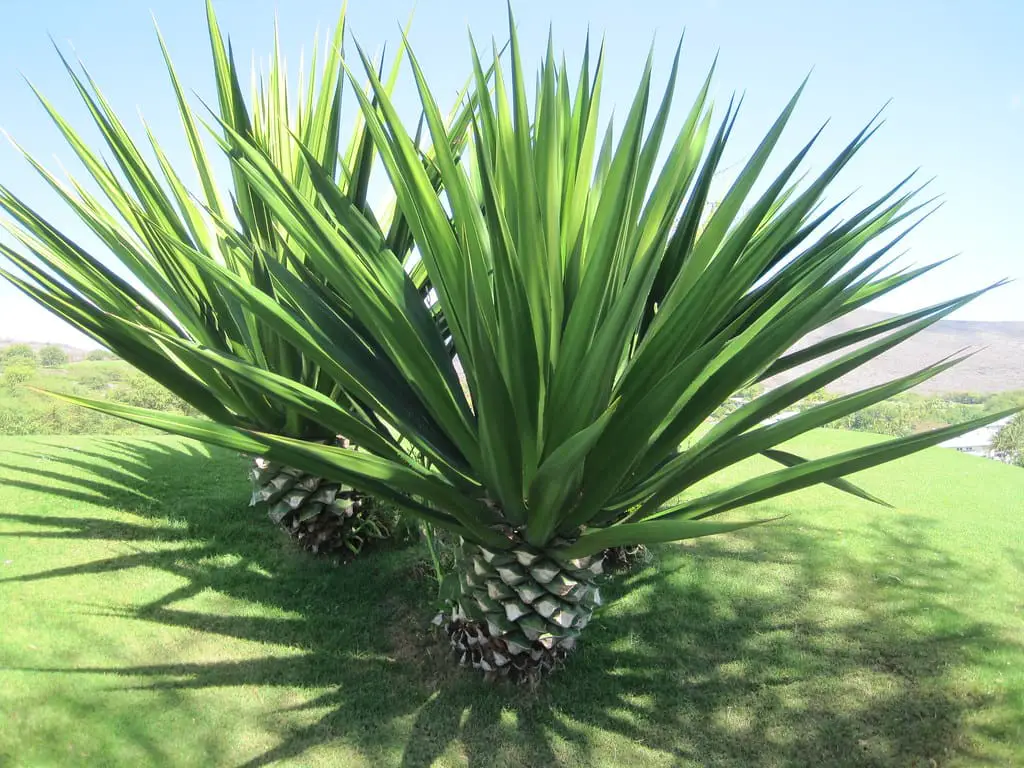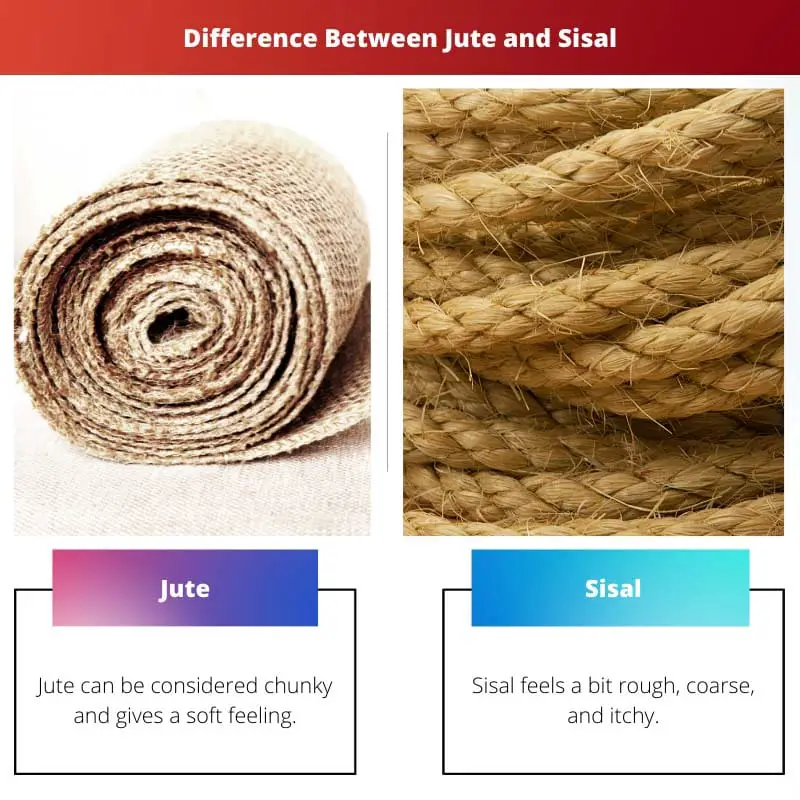A variety of fibres are used in the textile industry, varying from cotton and silk to jute and sisal. These fibres are used for making products like rugs, mats, bedsheets, pillow covers, and many other things too.
Jute and Sisal are common fibres when it comes to making mats and rugs.
Key Takeaways
- Jute fibers are softer and more pliable than sisal fibers, which are stiffer and more durable.
- Jute originates from the Corchorus plant, while sisal comes from the Agave sisalana plant.
- Both natural fibers are used in making ropes, textiles, and other products, but sisal is more suited for heavy-duty applications.
Jute vs Sisal
Jute is a long, soft, shiny vegetable fibre that is spun into coarse, strong threads, it is primarily grown in India and Bangladesh and is one of the most affordable natural fibres. Sisal is a stiff, durable fibre that is derived from the leaves of the sisal plant, which is native to Africa.

Jute is a fibre that is procured from the skin of the Jute plant. It naturally has a light brown colour but can also be dyed while making different products.
However, these dyes can fade when exposed to sunlight for a long time. Jute is a durable fibre and is so used in a lot of places apart from rugs.
Sisal is a fibre that is procured from the Agave Sisalana plant. It is widely used in the production of mats but is not recommended if one needs to spend a lot of time using it. The reason for this is its coarse, rough, and a little bit rough texture.
Comparison Table
| Parameters of Comparison | Jute | Sisal |
|---|---|---|
| Feel | Jute can be considered chunky and gives a soft feeling. | Sisal feels a bit rough, coarse, and itchy. |
| Shade | Jute has a shade of natural brown. | Sisal has a creamish or off white shade. |
| Durability | Jute has a good durability | Sisal has a better durability |
| Benefits | It does not shed easily, is less costly, feels soft, and is sustainable. | It is hypoallergenic, very durable, easy to clean, and fire-resistant. |
| Cost | Jute is less expensive. | Sisal is more expensive. |
What is Jute?
Jute is procured from the Corchorus plant, also called the golden fibre. The car jewellers plant is a spindly, tall, and flowering plant.
The central part of the Corchorus stalk is where jute is obtained from. It is used widely to make rugs, mats, and many other materials.
Jute is a fibre that is used most commonly to make rugs, and so is used in many households on a daily basis. It gives a very soft feeling to the touch and is considered as being chunky.
It naturally has a very beautiful light brown colour, making it desirable. One more beneficial thing about jute is that it can be dyed.
Therefore jute can be used to make light brown materials and any colour we want. Although care must be taken with dyed jute since if it is left under the sun for a prolonged period, it might start to lose its colour; that is, it will start fading.
Jute is a very durable fibre and doesn’t even shade very easily. It can be used to make foot rugs even in places with high traffic. It is not very expensive, and its maintenance also doesn’t cost much; it is a sustainable fibre.

What is Sisal?
Sisal is procured from a plant called Agave Sisalana. This plant is primarily cultivated in Mexico, China, Kenya, Brazil and Cuba. Sisal is procured from this plant by crushing the leaves to form a firm fibre.
Its significant advantages make Sisal desirable among people, and therefore, it is used widely to make mats and rugs.
There is no fibre that can even challenge Sisal when it comes to durability. It stands among the most durable fibres, which are naturally strong. The lifetime of sisal is approximately eight years which is considered to be very long in the case of fibres.
It can easily withstand high wear and tear since it is made using plant leaves that are very coarse and stiff. The materials made with sisal fibre give a not-so-soft or even rough feel.
Therefore it is not recommended to use sisal for things that are needed to be used for comfort.
Sisal has a natural shade of brown, which is lighter in comparison to jute. Its appearance can be considered as a creamy white or can even be compared to the colour of wheat.
Even after being rough, it is desirable for making products due to its many benefits, like being durable, not shedding easily, fire-resistant, withstanding wear and tear, being hypoallergenic, and sustainable fibre. However, sisal is costlier than jute.

Main Differences Between Jute and Sisal
- Jute is procured from the skin of the Jute plant, whereas Sisal is obtained from the Agave Sisalana plant.
- Jute is a little less durable, whereas Sisal is considered to be more durable.
- Jute has incredible durability but does not outrun the durability of Sisal. Sisal is considered to be the most durable fibre in nature.
- The benefits of Jute are that it doesn’t shed easily, is less pricey, and gives a soft feel at the touch. On the other hand, Sisal is easy to clean, sustainable, fire-resistant, and even hypoallergenic.
- While talking about the price, Jute is a bit less costly as compared to Sisal.


This post was really interesting, every bit was informative, good job!
This article provides an in-depth comparison between jute and sisal. Well researched and informative!
I totally agree with you Caitlin. I appreciate the amount of research put into this article.
I found this to be quite a boring read, this article could’ve been more engaging.
This article gave an extensive amount of information about the two types of fibers, jute, and sisal. Great job!
The article has a lot of good information and I feel like I learned a lot of new things.
I feel like the article didn’t provide enough information, or went too deep on the subject.
I can understand that, but I appreciate the thoroughness of the article.